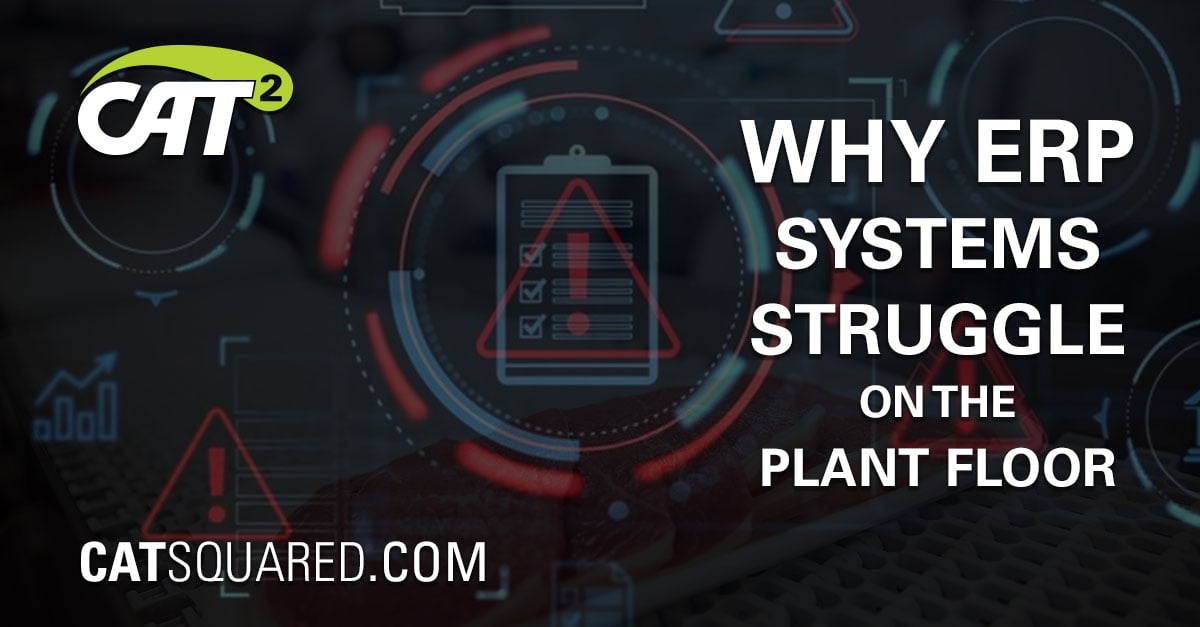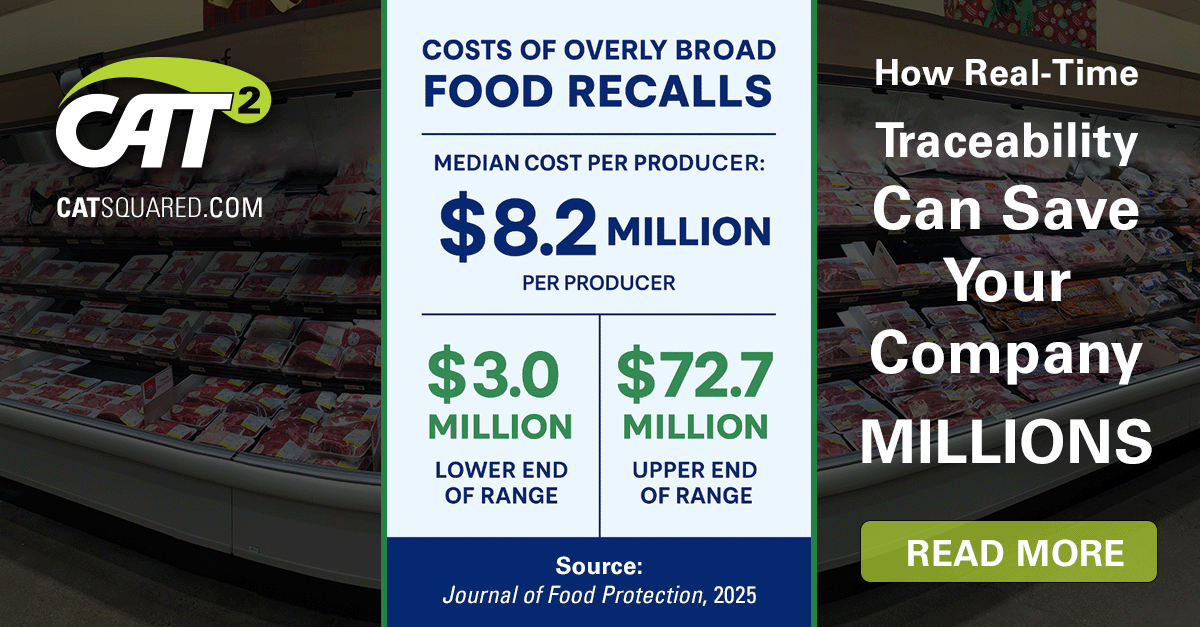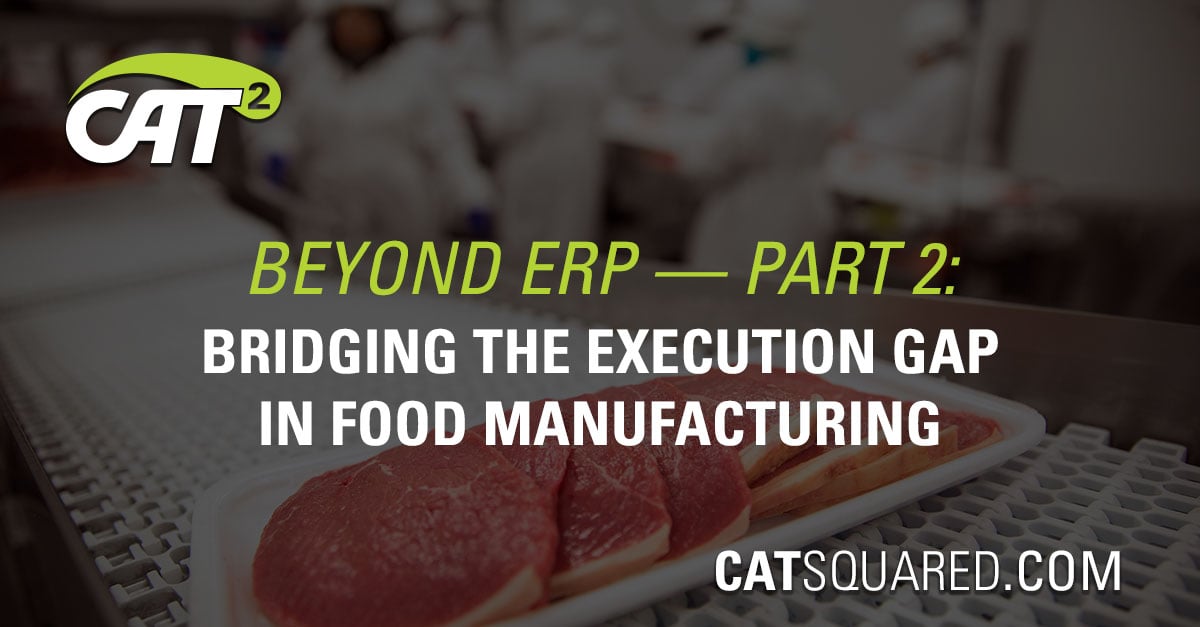Enterprise Resource Planning (ERP) systems are essential for food manufacturers, providing centralized control over finance, procurement, and inventory management. But when it comes to plant-floor execution, especially in meat and poultry operations, ERP alone often isn’t enough.
In this first post of our Beyond ERP blog series, we break down the limits of ERP in food manufacturing and introduce the processes where an MES (Manufacturing Execution System) outperforms ERP—particularly in disassembly, reassembly, mixing, traceability, and yield tracking.
The Promise vs. Reality of ERP Software in Food Manufacturing
ERP platforms like SAP, Oracle, and Microsoft Dynamics offer value at the enterprise level—but success isn’t guaranteed. Many companies encounter resistance and complexity when bringing an ERP to the shop floor. In fact:
- 26% of employees report not using their company’s ERP system at all, and
- 51% of companies experience operational disruptions when going live with a new ERP.
These statistics highlight a troubling reality: even after heavy investments, an ERP can end up underutilized or even hinder operations if users find it cumbersome or ill-suited to their daily workflows.
“Only about two-thirds of companies consider their ERP implementations successful,” according to one study. The remaining one-third deal with costly issues or outright failure.
A stark example is Waste Management’s infamous ERP implementation failure, which led to an initial loss estimate of $100 million – later revised to $500 million – and a legal battle with the vendor. The core lesson from such cases is that even powerful ERP software can falter if it can’t handle the complexity of a business’s operations or if it isn’t adopted properly by the end users.
Why ERP Software Struggles on the Plant Floor
For meat and poultry processors, traditional ERP systems lack the real-time capabilities and process-specific functionality required for:
- Disassembly Processes
ERP systems are designed for assembly-line logic, not disassembly. In meat and poultry operations, yield varies by carcass, creating complexity that ERP platforms can’t easily model. - Variable Yields & Catch-Weights
Moisture loss, trimming waste, and catch-weight variance disrupt ERP assumptions of fixed inputs and outputs—leading to inventory inaccuracies and reconciliation issues. - Mixing & Reassembly
ERP isn’t built for multi-ingredient blending or lot genealogy. MES tracks batch composition, source lots, and compliance data at every step—critical for food safety and traceability. - Real-Time Data Capture
ERP interfaces aren’t operator-friendly. Line workers often revert to manual logs, paper forms, or Excel, breaking the data flow and reintroducing silos. - Plant-Floor User Interface
Many ERP modules were designed for office staff, not for a plant environment where gloves, touchscreens, and split-second decisions are the norm.
Each of these challenges can result in workarounds or inefficiencies when using only an ERP. For example, some meat processors resort to manual yield calculations outside the system or build customizations to handle variable weights, driving up IT costs and complexity. Others find their ERP’s production module cannot enforce quality checks or traceability at each step, requiring supplemental systems or ad-hoc databases. All these gaps undermine the “single source of truth” that ERP promises.
ERP Platforms Need a Partner on the Plant Floor
ERP systems are vital for enterprise operations—but they weren’t built to handle real-time execution in food manufacturing. To succeed in high-variability environments like meat and poultry, companies need a system purpose-built for the plant floor—a system that connects directly to production equipment, scales, scanners, and sensors.
In Part 2 of this blog series, we’ll introduce how CAT Squared’s MES platform integrates seamlessly with ERP systems to:
- Track yields in real-time
- Enable traceability by lot or batch
- Support multi-site standardization
- Empower operators without slowing them down





